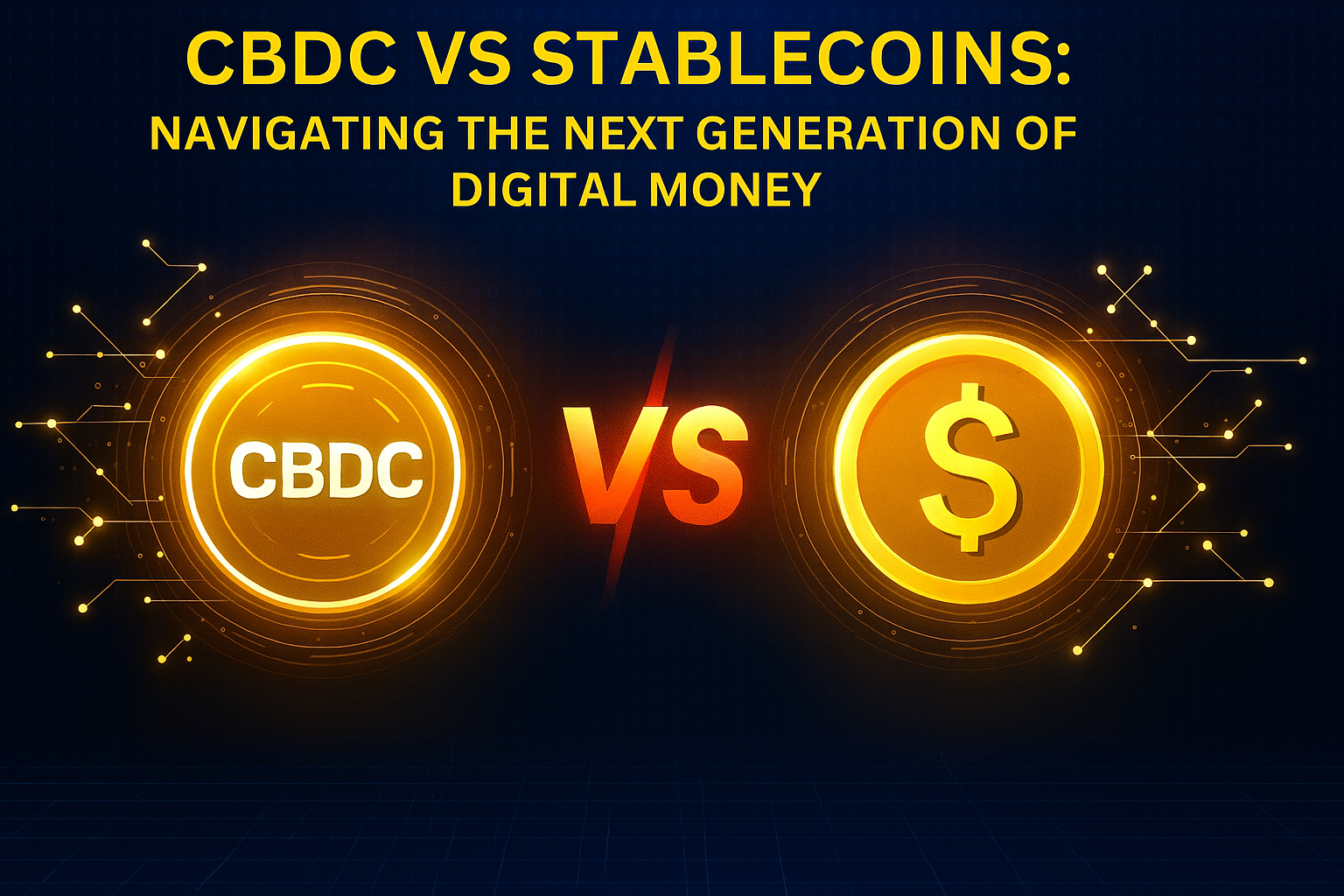CBDC vs Stablecoins: Navigating the Next Generation of Digital Money

The evolution of money is accelerating at a pace unseen in previous decades. In this digital financial revolution, understanding the distinctions between CBDC vs Stablecoins is crucial for financial institutions, regulators, and blockchain innovators alike. While both concepts aim to modernize payments and improve financial inclusion, their underlying mechanisms and strategic objectives diverge significantly.
Foundational Architecture and Ledger Systems
At the heart of the CBDC vs Stablecoins debate lies their technical infrastructure.
Central Bank Digital Currencies (CBDCs) operate on permissioned distributed ledgers controlled by central banks. These networks prioritize deterministic consensus, regulatory compliance, and fail-safe transaction finality. Nodes are pre-approved, and the ledger is tightly controlled to ensure monetary integrity and avoid systemic risks.
Stablecoins, in contrast, are built on public or semi-public blockchains. They rely on cryptographic protocols, smart contracts, and decentralized validators to maintain stability. Whether collateralized by fiat, cryptocurrencies, or algorithmically stabilized, stablecoins offer high interoperability and can function in global DeFi ecosystems. Their decentralized nature introduces both flexibility and exposure to blockchain-specific risks.
Governance and Monetary Policy Enforcement
Governance is another distinguishing factor in CBDC vs Stablecoins.
CBDCs are governed by central banks and reflect traditional monetary policy. They allow programmable interventions like automated interest rate adjustments, conditional spending controls, or transaction restrictions that align with macroeconomic objectives. These features make CBDCs highly reliable for implementing national fiscal policy in real time.
Stablecoins operate on protocol-based governance. Changes in supply, collateralization ratios, or stabilization mechanisms are determined through code or community consensus. This decentralization provides resilience and transparency but reduces direct regulatory control, posing unique compliance challenges in jurisdictions with strict financial oversight.
Transaction Dynamics and Operational Efficiency
Efficiency and predictability are critical when comparing CBDC vs Stablecoins.
CBDCs benefit from centralized validation and high-throughput ledger designs, resulting in low-latency, predictable transaction settlements. They eliminate intermediaries and reduce reconciliation complexities for banks and businesses.
Stablecoins, conversely, settle on public blockchains, making transaction speed dependent on block time, network congestion, and gas fees. Their strength lies in accessibility, allowing instant cross-border transfers and integration with decentralized finance protocols. However, these features come with the risk of network congestion, front-running, or potential oracle inaccuracies.
Security and Compliance Models
Security considerations further highlight the contrast in CBDC vs Stablecoins.
CBDCs integrate robust institutional-grade security, including hardware-secured nodes, centralized key management, and regulatory audit trails. Transaction data is monitored to enforce AML/KYC compliance without sacrificing core privacy protections.
Stablecoins rely on cryptographic assurances, smart contract security, and network consensus. While transparency is high, security relies on the integrity of code and decentralized governance. Certain privacy-oriented stablecoins integrate zero-knowledge proofs, but regulatory compliance often depends on off-chain mechanisms.
Implications for Global Finance and Adoption
The global financial landscape will likely accommodate both CBDCs and stablecoins, though in different roles. CBDCs are positioned to enhance national monetary sovereignty, reduce settlement risk, and provide a foundation for digital financial policy. Stablecoins, by contrast, foster innovation, liquidity, and seamless cross-border transactions in decentralized ecosystems.
Understanding CBDC vs Stablecoins is vital for businesses planning to leverage digital currencies. As adoption grows, interoperability between regulated CBDCs and stablecoins could define the next era of digital commerce, enabling faster, programmable, and globally accessible financial services.
- Art
- Causes
- Crafts
- Dance
- Drinks
- Film
- Fitness
- Food
- Oyunlar
- Gardening
- Health
- Home
- Literature
- Music
- Networking
- Other
- Party
- Religion
- Shopping
- Sports
- Theater
- Wellness


